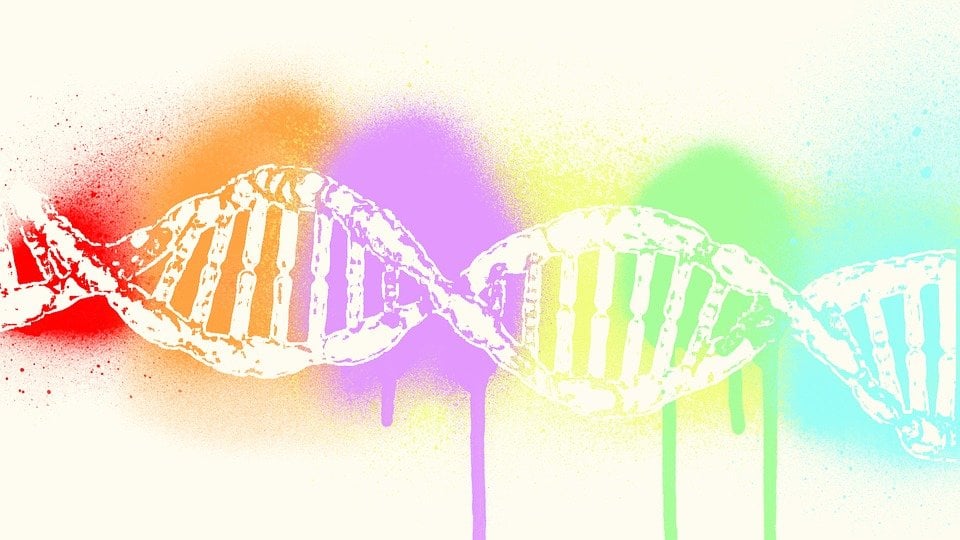Summary: What we find pleasurable may be down to our genetics. Researchers found nucleus accumbens activation and physical anhedonia were influenced by shared genes. The experience of pleasure and physical anhedonia also appear to share some of the same genes.
Source: APS
Differences in how our brains respond when we’re anticipating a financial reward are due, in part, to genetic differences, according to research with identical and fraternal twins published in Psychological Science. The findings suggest that how we experience pleasure and reward is at least partly heritable.
The brain’s reward system plays a central role in decision making and emotion, and research suggests that impaired reward processing and the inability to feel pleasure are features of various neuropsychiatric disorders, including schizophrenia, major depressive disorder, and bipolar disorder.
“Being able to quantify the relative influences of genetic and environmental factors on activation of the reward circuit could deepen our understanding on the genesis of the reward system, and further clarify potential causes of the lack of pleasure, or anhedonia, found in mental disorders,” says lead researcher Raymond Chan.
To investigate the relative contributions of genetic and environmental factors, Chan and colleagues recruited pairs of identical and fraternal twins from the Twin Registry of the Chinese Academy of Sciences Institute of Psychology. Both identical twin pairs and fraternal twin pairs are thought to share the same environment; while identical twin pairs share the same genes, fraternal twins share only about 50% of the same genes. Comparing how traits vary across identical and fraternal twin pairs is thought to shed light on the degree to which genes explain that variation.
In this study, the researchers focused on a structure buried in the middle of the brain called the nucleus accumbens. The nucleus accumbens is part of the ventral striatum, an area that facilitates aspects of decision making, motivation, and reward processing. Chan and colleagues wanted to examine whether nucleus accumbens activation in anticipation of a financial reward differed between identical twin pairs and fraternal twin pairs.
The participants – 43 pairs of same-sex identical twins and 44 pairs of same-sex fraternal twins – completed a computer task while their brain activity was measured via functional MRI. On each trial, the participants pressed a button as soon as they saw a target and an on-screen cue told them what type of trial it would be: a triangle meant they would gain 5 points for hitting the target and a square meant they would lose 5 points for missing it. A circle indicated that they wouldn’t gain or lose any points, regardless of their performance. In total, they completed two runs of the task, each of which contained 10 gain trials, 10 loss trials, and 10 neutral trials.
The participants also completed Chinese versions of validated measures for physical anhedonia, social anhedonia, and experience of pleasure.
On trials when the participants expected an award, activation of the nucleus accumbens appeared to moderately heritable, as were scores for physical anhedonia and pleasure. Furthermore, nucleus accumbens activation and physical anhedonia scores appeared to be influenced by shared genes; physical anhedonia and pleasure also appeared to share some of the same genes.
Activation of the nucleus accumbens on loss trials did not appear to be heritable, however.
The fact that activation of the reward system and self-reported pleasure seem to share genetic influence provides further support for the role of the nucleus accumbens in pleasure, the researchers note.
“We plan to clarify how the genetic and environmental factors shape the reward system – in other words, we would like to link gene expression and specific environmental factors to the reward circuit,” says Chan.
Continued research examining the heritability of brain and behavioral reward responses “could help researchers identify shared regions of the genome and explore interventions fore amotivation and anhedonia, both of which are associated with poor prognosis and are resistant to treatments that are currently available,” Chan and colleagues conclude.

Coauthors on the research include Zhi L and, Yi Wang of the Chinese Academy of Sciences, Chao Yan of East China Normal University, Eric F. C. Cheung of Castle Peak Hospital, Anna R. Docherty of the University of Utah, Pak C. Sham of the University of Hong Kong, and Raquel E. Gur and Ruben C. Gur of the University of Pennsylvania.
Funding: This study was supported by grants from the National Key Research and Development Programme (2016YFC0906402), the National Natural Science Foundation of China (81571317), the Beijing Training Project for the Leading Talents in Science and Technology (Z151100000315020), the Beijing Municipal Commission of Science and Technology (Z161100000216138), the Strategic Priority Research Programme (B) of the Chinese Academy of Sciences (CAS; XDB02030002), the CAS Key Laboratory of Mental Health at the Institute of Psychology, and the CAS/State Administration of Foreign Experts Affairs (SAFEA) International Partnership Program for Creative Research Teams (Y2CX131003).
Source:
APS
Media Contacts:
Anna Mikulak – APS
Image Source:
The image is in the public domain.
Original Research: Closed access
“Inheritance of Neural Substrates for Motivation and Pleasure”. Zhi Li, Yi Wang, Chao Yan, Eric F. C. Cheung, Anna R. Docherty, Pak C. Sham, Raquel E. Gur, Ruben C. Gur, Raymond C. K. Chan.
Psychological Science. doi:10.1177/09567976198593404
Abstract
Inheritance of Neural Substrates for Motivation and Pleasures
Despite advances in the understanding of the reward system and the role of dopamine in recent decades, the heritability of the underlying neural mechanisms is not known. In the present study, we examined the hemodynamic activation of the nucleus accumbens (NAcc), a key hub of the reward system, in 86 healthy monozygotic twins and 88 healthy dizygotic twins during a monetary-incentive-delay task. The participants also completed self-report measures of pleasure. Using voxelwise heritability mapping, we found that activation of the bilateral NAcc during the anticipation of monetary gains had significant heritability (h2 = .20–.49). Moreover, significant shared genetic covariance was observed between pleasure and NAcc activation during the anticipation of monetary gain. These findings suggest that both NAcc activation and self-reported pleasure may be heritable and that their phenotypic correlation may be partially explained by shared genetic variation.






